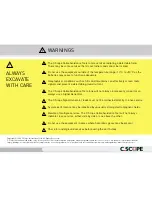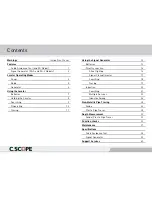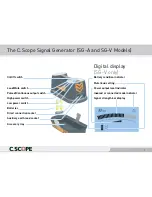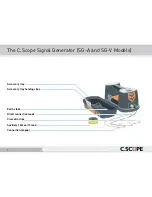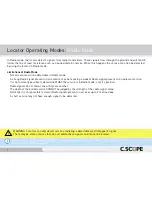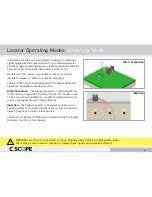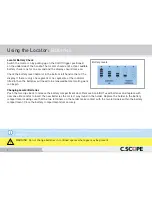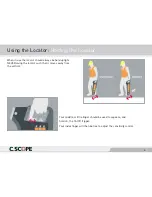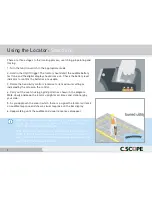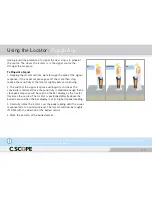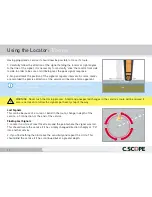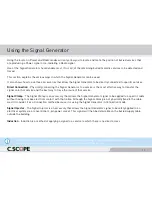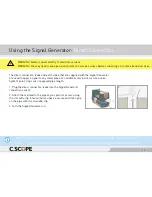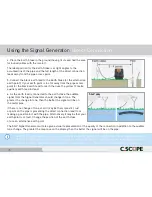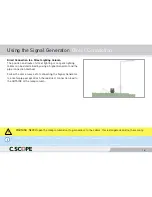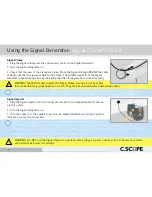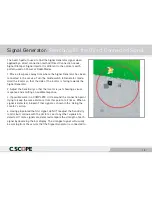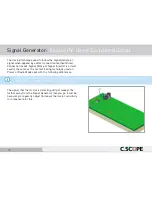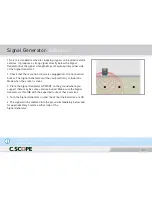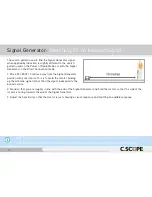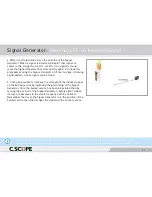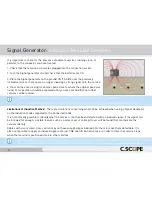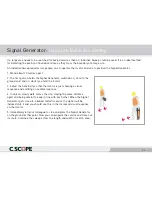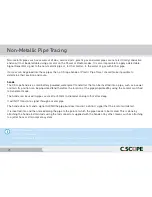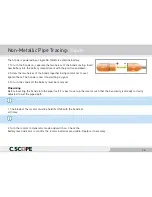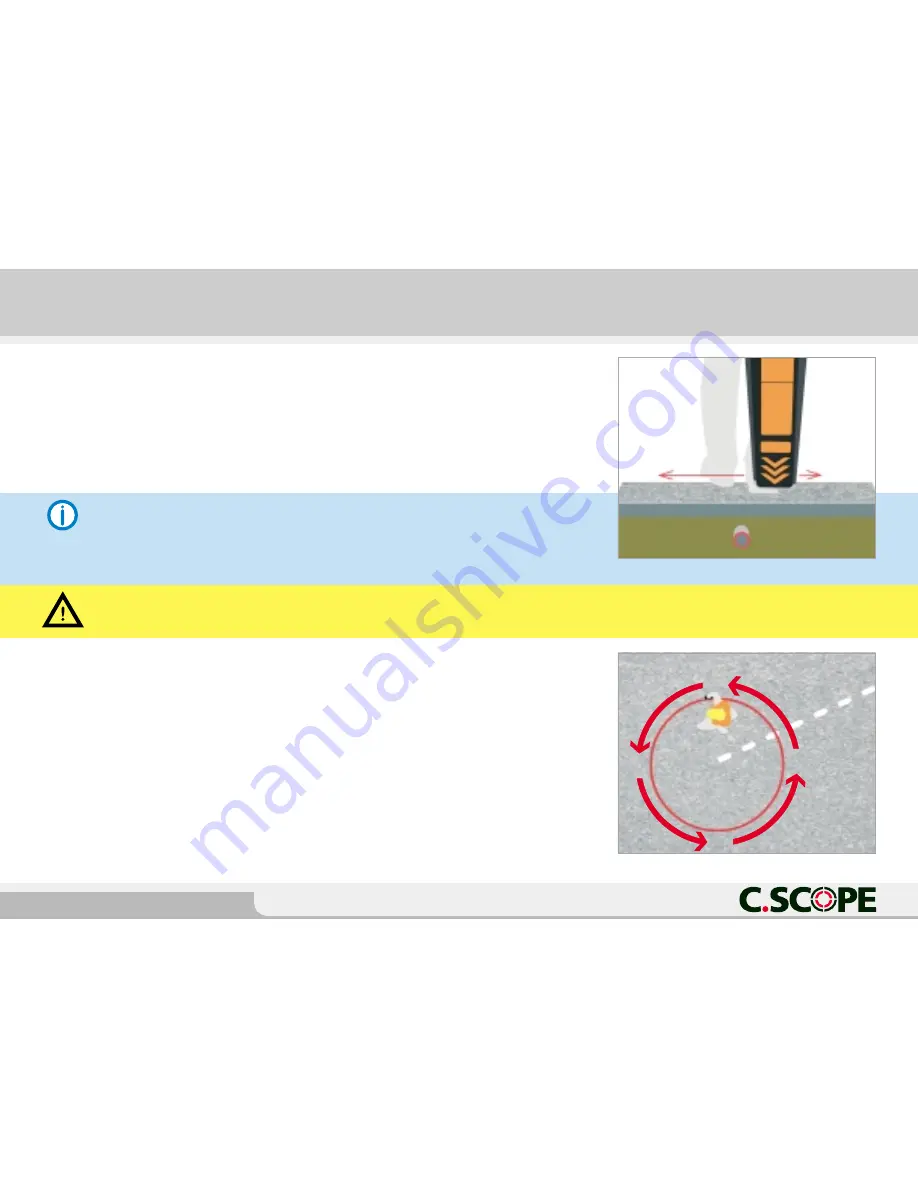
Using the Locator:
Tracing
Having pinpointed a service it should now be possible to trace it’s route.
1. Carefully follow the direction of the signal holding the locator at right angles
to the line of the signal. It is necessary to constantly ‘slice’ the locator from side
to side in order to be sure of still being over the peak signal response.
2. Stop and mark the position of the signal at regular intervals. As more marks
are recorded the precise direction of the service will become more apparent.
Lost Signals
This can be because of a curve, or bend in the route, change in depth of the
service, a T connection or the end of the service.
Finding Lost Signals
1. Locate in a circle at least 1metre around the point where the signal was lost.
This should locate the service if it has simply changed direction sharply or ‘T’d’
into another service.
2. If you find nothing then increase the sensitivity and repeat the circle. This
should find the service if it has continued but at a greater depth.
NOTE It may be necessary to readjust the sensitivity to maintain the
optimum response.
NOTE After tracing return to the original search grid to search for
further buried services.
WARNING Never rush the tracing process. Small and unexpected changes in the service’s route will be missed if
care is not taken to follow the signal’s path every step of the way.
11


